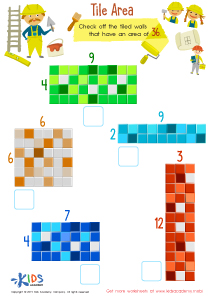Understanding place values Normal Numbers Worksheets for Ages 6-7
7 filtered results
-
From - To
Welcome to our "Understanding Place Values Normal Numbers Worksheets" designed specifically for children aged 6-7. These engaging worksheets help young learners grasp the foundational concept of place value, essential for mastering number comprehension. Discover a variety of fun and interactive exercises that guide students in identifying the value of digits based on their position within a number. With colorful illustrations and straightforward instructions, your child will develop confidence in their math skills. Perfect for homeschooling or supplemental practice, these resources ensure a comprehensive understanding of numbers while making learning enjoyable! Explore our worksheets today and enhance your child's math journey.
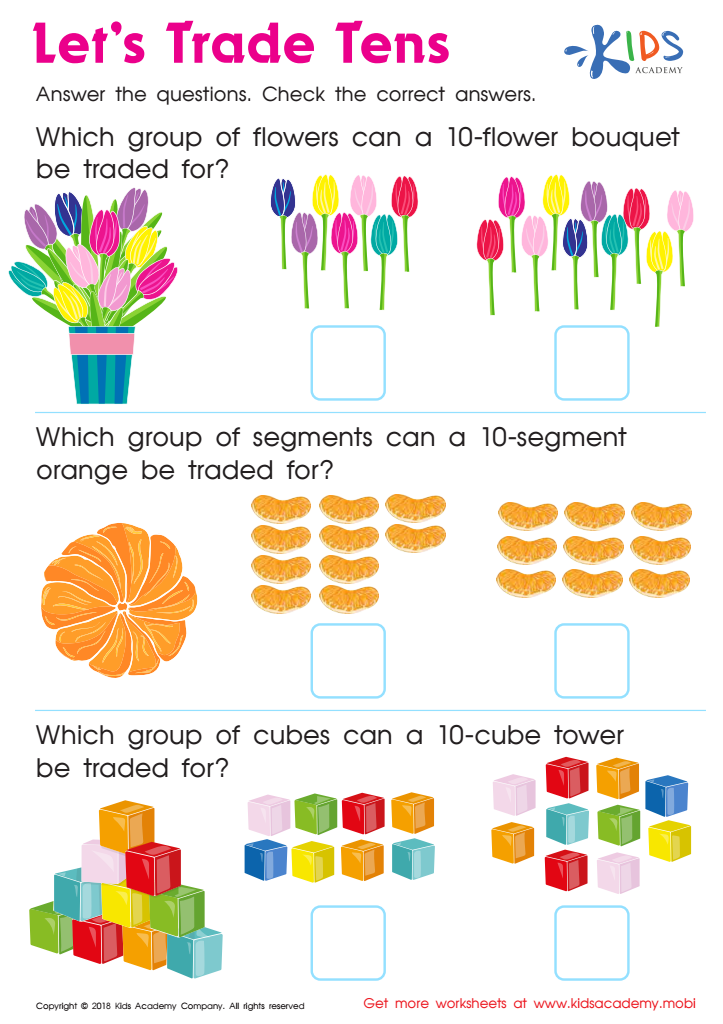

Lets Trade Tens Worksheet
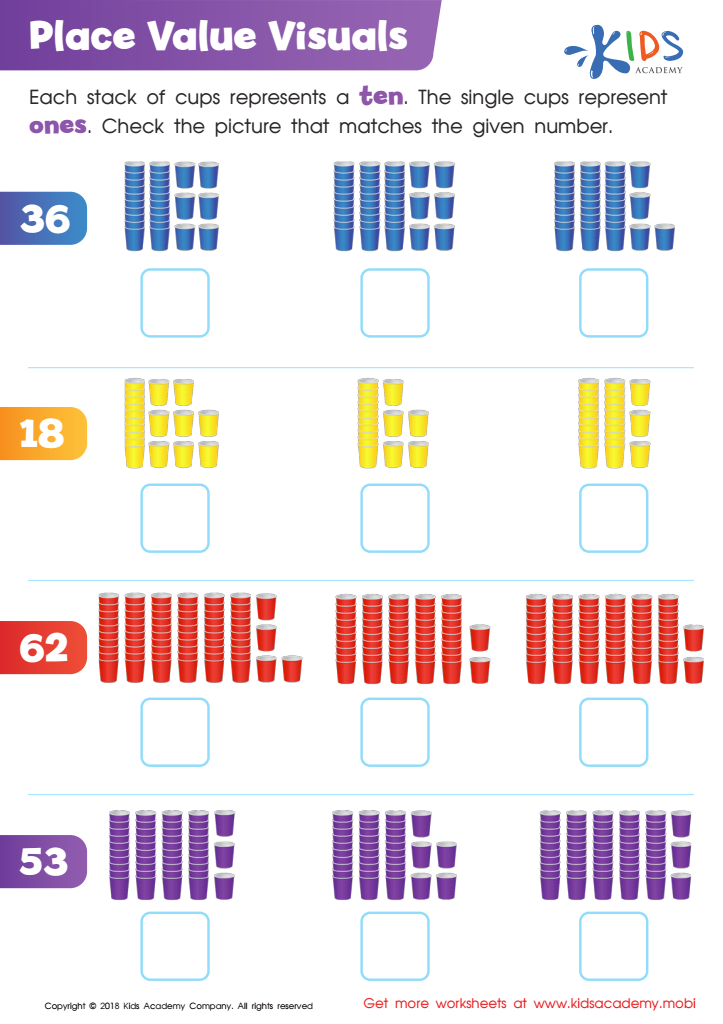

Place Value Visuals Worksheet
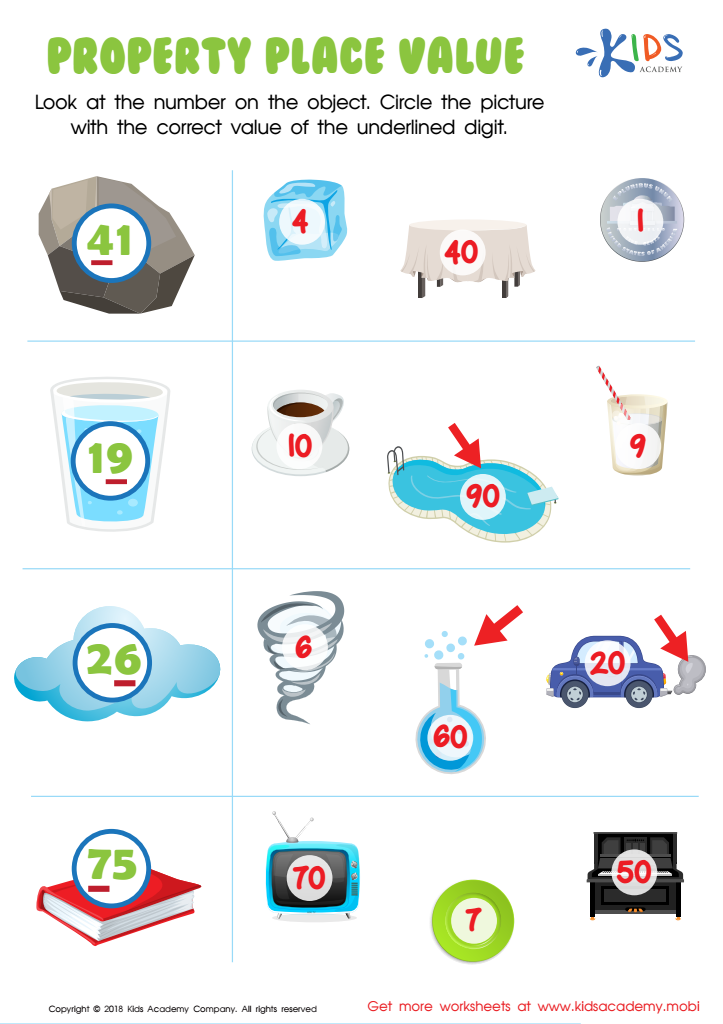

Property Place Value Worksheet
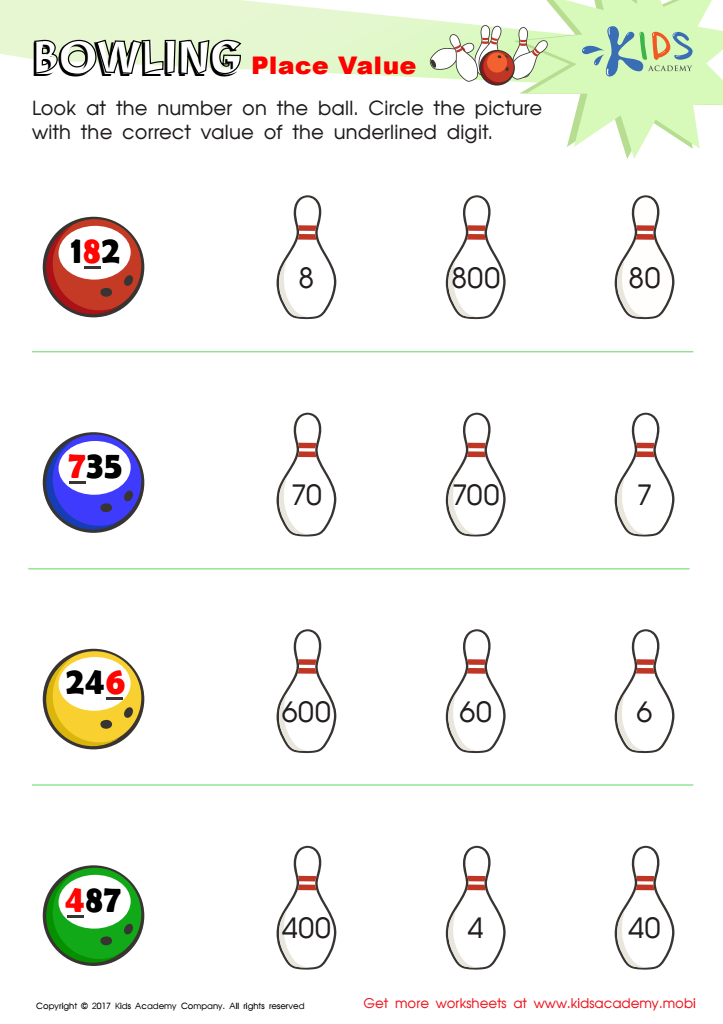

Place Value Worksheet
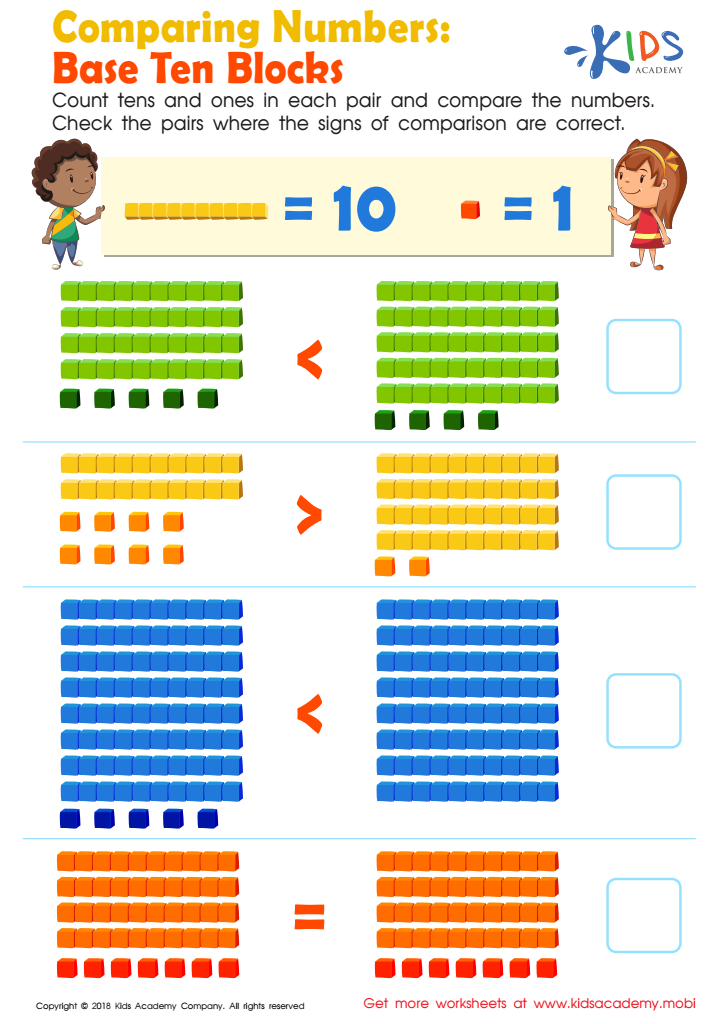

Comparing Numbers: Base Ten Blocks Worksheet


Place Value Quest Worksheet


10 Tens Make 1 Hundred Worksheet
Understanding place values in normal numbers is crucial for children aged 6-7, as it forms the foundation for their mathematical proficiency. At this stage, kids are transitioning from basic counting to more complex numerical concepts. Grasping place values—units, tens, and beyond—enables them to comprehend how numbers are constructed and their significance in the real world.
Parents and teachers should prioritize this understanding because it is essential for various mathematical operations, including addition, subtraction, and ultimately multiplication and division. It serves as a stepping stone for more advanced topics like decimals and fractions. Additionally, a strong grasp of place values builds critical thinking skills and problem-solving abilities, equipping children to tackle math challenges confidently.
Moreover, when children understand place values, they can better appreciate the numerical systems they encounter in everyday situations, such as money management and time-telling. By fostering this understanding, adults can support children in developing a positive attitude towards math, reducing anxiety related to the subject, and promoting academic success. Ultimately, a solid foundation in place values lays the groundwork for continued learning and helps shape well-rounded, numerically literate individuals.
 Assign to My Students
Assign to My Students
















